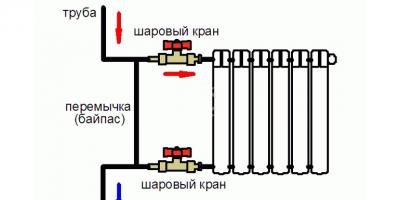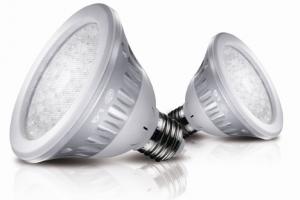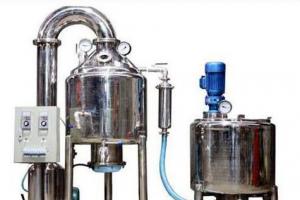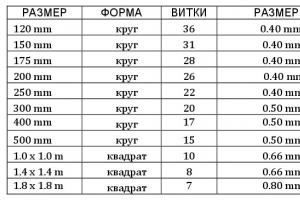Lecture No. 5.
7.1. Basic lighting characteristics.
7.2. Classification of industrial lighting.
7.3. Basic requirements for industrial lighting.
7.4. Standardization of industrial lighting.
7.5. Light sources and lighting devices.
Lighting is one of the most important production factors. Properly designed and rationally executed industrial lighting has a positive psycho-physiological effect on workers, improves efficiency and safety, reduces fatigue and injuries, and maintains high performance. Therefore, the illumination of industrial premises is set in accordance with certain norms and rules.
7.1. Basic lighting characteristics.
Visible light is electromagnetic radiation with a wavelength of 0.38...0.76 microns. The sensitivity of vision is maximum to electromagnetic radiation with a wavelength of 0.555 microns (yellow-green color) and decreases towards the boundaries of the visible spectrum. Electromagnetic radiation with a wavelength of 0.01 - 0.38 microns corresponds to ultraviolet radiation, 0.77 - 340 microns - to infrared radiation.
The carriers of electromagnetic radiation are photons.
Lighting is characterized by quantitative and qualitative indicators.
Quantitative indicators of lighting.
Light flowF– electromagnetic radiation perceived by humans as light; measured in lumens (lm);
All light sources emit luminous flux into space unevenly, so the concept of luminous intensity was introduced.
The power of lightJ – spatial luminous flux density; is defined as the ratio of the luminous flux dF to the solid angle dΩ , in which it is distributed: J = dF / dΩ; measured in candelas (cd);
Illumination E– characterizes the surface density of light flux; incident on the illuminated surface: E=dF / dS, measured in lux (lx = lm/m2);
BrightnessL - characterizes the surface density of the light flux emitted by the surface in the direction α (surfaces at an angle α to normal is the ratio of luminous intensity dJ α , radiated, illuminated or luminous surface in that direction, to the area dS projection of this surface onto a plane perpendicular to this direction): L = dJ α / (dS cos α) , measured in cd/m2.
Moon – E as a satellite and L as a lantern.
Surfaces whose brightness in reflected or transmitted light is the same in all directions are called diffusion.
Quality indicators of lighting.
To qualitatively assess the conditions of visual work, such indicators as the background, the contrast of the object with the background, the pulsation coefficient of illumination, the illumination index, and the spectral composition of light are used.
Reflection coefficient ρ- defined as the ratio of the light flux reflected from the surface F negative to the light flux incident on it F pad: ρ = F neg / F pad.
Background– This is the surface on which the object is distinguished. The background is characterized by the reflection coefficient ρ. When ρ > 0.4 the background is considered light; at ρ = 0.2...0.4 – average and at ρ< 0,2 – dark.
Contrast of subject with background k – characterized by the ratio of the brightness of the object in question (point, line, sign, spot, crack, mark, etc.) and the background:
k = (L F – L ABOUT .) / L F, is considered large if k > 0.5 (the object stands out sharply against the background), medium when k = 0.2...0.5 (the object and background differ noticeably in brightness) and small when k< 0,2 (объект слабо заметен на фоне).
If the brightness of the background and the object are equal, they may differ in color.
Visibility V characterizes the eye's ability to perceive an object. It depends on the illumination, the size of the object, its brightness, the contrast of the object with the background, and the duration of exposure. V= k / k por , Where k since then – threshold or smallest visible to the eye contrast, with a slight decrease in which the object becomes indistinguishable against this background K POR = 0.01 – 0.015. Visibility decreases sharply when brilliant light sources appear in the field of view - the blinding effect -...
Blindness index P O – glare rating criterion action created by the lighting installation,
R O = 1000 (V 1 / V 2 – 1),
Where V 1 And V 2 – visibility of the object of discrimination, respectively, when shielded and in the presence of bright light sources in the field of view. Shielding of light sources is carried out using shields, visors, etc. Maximum value R O not d.b. more than 40.
Illumination pulsation coefficientk E – this is the criterion depth of illumination fluctuations as a result of changes in light flux over time
k E = 100 (E max – E min )/ (2 E Wed )
Where E max , E min , E Wed – maximum, minimum and average illumination values for the oscillation period; for gas discharge lamps k E = 25...65 %, for conventional incandescent lamps k E = 7 %, for halogen incandescent lamps k E = 1 %.
Fluctuations in illumination cause visual fatigue, strobe effect, cause injury. Ripple limitation methods: uniform alternation of power supply to lamps from different phases (3-phase networks), use of phosphors with a high aftereffect coefficient, power supply of lamps with high-frequency currents - 400 Hz, use of 2-lamp lamps powered according to a split-phase circuit.
Rated voltage of light source- the voltage for which a particular light source is designed, as well as for which it can be switched on with special equipment designed for this purpose. Measured in volts (V, V).
Rated power of light source- the power consumed by the light source when connected to the rated voltage, necessary to convert electrical energy into light. Measured in watts (W, W).
Luminous flux is the power of optical radiation emitted by a light source in all directions, assessed by its effect on the human eye. The main photometric parameter that characterizes the ability of a light source to illuminate a particular object. The amount of luminous flux depends on the wavelength emitted by the light source. Measured in lumens (Lm, Lm)
Luminous efficiency is the ratio of the luminous flux emitted by a source to the power it consumes. Serves as a characteristic of the efficiency of light sources. Measured in lumens per watt (Lm/W, Lm/W).
For example, the luminous efficiency of a lamp with a luminous flux of 11,600 Lm and a power of 110 W is 11,600: 110 = 105 Lm/W.
Be careful when purchasing, pay attention to the luminous output of the luminaire assembly, and not to the luminous efficiency of the LEDs, since in the assembly there is a loss of luminous flux due to the efficiency of the driver, as well as the design features of the luminaire.
Color temperature characterizes the color of the light source. Measured in degrees Kelvin (K)
The lower the color temperature, the “warmer” the light; the higher the color temperature, the “colder” it is. For example, a lamp with a color temperature of 5,000 to 6,000 K emits cool white light, 4,000 – 4,500 K – neutral white, 2,700 – 3,000 K – warm white.
In the image you can see which sources of natural and artificial light correspond to which color temperature.
The color rendering index (coefficient) characterizes the degree to which the natural color of an object matches the visible color when illuminated by a certain light source.
Denoted by CRI (color rendering index) or Ra.

Power factor or cosine phi (cos) is called the ratio of active power to apparent power. Since active power is less than apparent power, power factor is always less than unity.
The pulsation coefficient is a criterion for assessing the depth of fluctuations in illumination created by a light source over time.
LED lamps – up to 5%
Incandescent lamps, halogen lamps – up to 5%
Fluorescent lamps – 5 – 45%
Mercury, sodium lamps – up to 80%
Metal halide – up to 100%
Illumination is a physical quantity equal to the luminous flux incident perpendicularly per unit of illuminated surface. Measured in lux (lx, lux).
1 lux is equal to a luminous flux of 1 lumen falling on a surface measuring 1 m2.

For example, the illumination of the earth by the sun's rays at noon is approximately equal to 100,000 lux, and the illumination of the street under artificial lighting is approximately equal to 4 lux.
Standardized illumination parameters for various objects are regulated by law.
|
Interior interior lighting |
Required illumination, lux |
|---|---|
|
Rooms with high levels of illumination : Offices, workrooms, operating rooms, cash registers, design, design and drawing offices, PC rooms, laboratories, auditoriums, grocery store sales areas, hairdressing salons, technical rooms |
400-500 |
|
Rooms with average lighting requirements: Sales areas of other stores, conference and boardrooms, reading rooms, exhibition halls, hotels |
200-300 |
|
Classrooms, study rooms, kindergartens |
400 |
|
Rooms with moderate lighting: Lobbies and cloakrooms of industrial buildings, lobbies and cloakrooms of public buildings, corridors and passages of public buildings, corridors and passages of residential buildings, staircases of industrial buildings, restrooms |
75-150 |
|
Staircases of residential buildings |
|
|
Interior special lighting |
Required illumination, lux |
|
Production premises, workshops |
500 |
|
Warehouses, sports facilities |
200 |
|
Automobile, railway stations, airports, agricultural facilities |
300 |
|
Pedestrian crossings, tunnels |
100 |
|
Technical and utility rooms |
100 |
|
Rooms with high levels of dust and moisture |
200 |
|
Outdoor Lighting |
Required illumination, lux |
|
The territory of an industrial enterprise, a warehouse complex, the territory of a gas station |
|
|
Parking, garage cooperatives, park, square, boulevard, local area, car areas, railway stations, airports |
The design of lighting systems in accordance with standardized parameters is carried out by specialists using special programs. Below is an example of a project for lighting a room of 6x6 meters with LED downlights (link to Dvo18-30-01) with a power of 30 W:
You can find out more about the standardized lighting parameters in the Code of Rules

In accordance with GOST 17677-82, there are several types of KSS. The possibility of using a lighting device in a particular area depends on the type of KSS.
|
Type KSS |
Zone of directions of maximum luminous intensity (in the upper and/or lower hemisphere) |
|
|---|---|---|
|
Designation |
Name |
|
|
Concentrated |
||
|
Deep |
0°-30°; 180°-150° |
|
|
Cosine |
0°-35°; 180°-145° |
|
|
Semi-wide |
35°-55°; 145°-125° |
|
|
55°-85°; 125°-95° |
||
|
Uniform |
||
|
Sinus |
70°-90°; 110°-90° |
|
The narrower the angle of distribution of the light flux, the smaller the diameter, the higher the directionality and contrast of the light spot. The wider the angle of distribution of the light flux, the larger the diameter of the light spot and the more uniform the illumination. Let's consider KSS type D of a standard office lamp
From the graph it can be determined that this lamp emits a luminous intensity of approximately 425 cd in the vertical downward direction, and at an angle of 30° the luminous intensity is approximately 325 cd
Light flow F – the power of radiant energy, estimated by the visual sensation it produces, lumen (lm).
Luminous Intensity I– spatial luminous flux density:
Ia= d F/ dω,
Where d F – luminous flux (lm), uniformly distributed within an elementary solid angle dω, avg (steradian). The unit of measurement of luminous intensity is the candela (cd), equal to the luminous flux
In 1 lm, extending inside a solid angle of 1 sr.
Illumination– surface luminous flux density, lux (lx):
E= d F/ dS,
Where dS– surface area, m2, onto which the luminous flux falls d F.
Brightness B– surface density of luminous intensity in a given direction. Brightness, which is a characteristic of luminous bodies, is equal to the ratio of the intensity of light in a given direction to the area of the projection of the luminous surface onto a plane perpendicular to this direction:
B=I/ dS cosα,
Where I– luminous intensity in a given direction, cd; dS– radiating surface area, m2; α – angle between the direction of radiation and the plane, degrees. The brightness unit is cd/m2.
What is a lamp?
What functions does the lighting fixture perform in a luminaire?
What are the design types of artificial lighting? Why is it prohibited to use only local lighting?
The use of local lighting alone in industrial premises is prohibited, since the sharp contrast between brightly lit and unlit areas leads to visual strain, slows down the speed of work and can cause accidents.
What is general lighting? In what ways can you increase the illumination created by general lighting?
What is combined lighting? In what cases is it used?
What are the advantages of incandescent lamps over gas-discharge lamps?
The main advantage of gas-discharge lamps over incandescent lamps is their high light output from 40 to 110 lm/W. They have a significantly longer service life - over 10 thousand hours, a low lamp surface temperature, and an emission spectrum close to sunlight, ensuring high quality color rendering. In addition, gas-discharge fluorescent lamps provide more uniform illumination and are recommended for use in general lighting fixtures.
What is the operating principle of lamps used in classrooms? What are the advantages of these lamps?
Repentant with a gas electric discharge into visible light.
Fluorescent lamps, depending on the phosphor used in them, create a different spectral composition of light and are available in white (WL), warm white (WLT) and cool white light (CLW), daylight (LD), daylight with corrected color rendering (CDC).
What are the disadvantages of gas discharge lamps?
The disadvantages of gas-discharge lamps also include: the need to use special starting devices, the dependence of the lamp’s performance on the ambient temperature and the supply voltage, the long burn-up period for high-pressure lamps (10 - 15 minutes).
What is light ripple factor?
TO P = 100 (E Max – E min) / 2 ·E Wed, where E Max, E min and E cf – maximum, minimum and average value of illumination during the period of its fluctuation, lux.
The value of the illumination pulsation coefficient varies from several percent (for incandescent lamps) to several tens of percent (for gas-discharge lamps).
What is the reason for the pulsation of the light flux of light sources? Which type of lamp has a higher light pulsation coefficient?
The luminous flux of lamp F at the moment of transition of the instantaneous value of the alternating voltage of the network through 0 decreases.
Rice. Light flux ripples with single-phase supply voltage
Gas-discharge lamps (including fluorescent lamps) have low inertia and change their luminous flux Ф almost proportionally to the amplitude of the supply voltage. The large thermal inertia of the filament of incandescent lamps prevents a noticeable decrease in the luminous flux of the lamp.
How can I reduce the light ripple factor?
What is the stroboscopic effect and why is it dangerous?
Acceptable values of what indicators of artificial lighting are established by SNiP 05/23/95?
Depending on what factors are the permissible values of artificial lighting indicators established?
What factors determine the characteristics of visual performance?
Object of distinction
Background– a surface adjacent directly to the object of discrimination, on which the object is viewed. The background is characterized by a reflectance coefficient that depends on the color and texture of the surface. Reflectance coefficient ρ is defined as the ratio of the luminous flux Ф neg reflected from the surface to the luminous flux F incident on it. The background is considered light when the reflectance of the surface on which the object is viewed is more than 0.4; average – with a reflection coefficient from 0.2 to 0.4; dark - with a reflection coefficient of less than 0.2.
Contrast of the object of discrimination with the background K is determined by the ratio of the absolute value of the difference in brightness of the object of discrimination IN o and background IN f to the greatest of these two brightnesses. Contrast is considered high at values TO more than 0.5; average – with values TO from 0.2 to 0.5; small – at values TO less than 0.2.
What is the object of discrimination? Give examples.
By what characteristic, obtained when calculating lighting, is the light source selected? What lamp parameters need to be determined?
The required luminous flux of the lamp Ф is calculated, providing the normalized value of illumination in the room E, and according to the lighting reference book, the type and power of a standard lamp with a luminous flux F GOST, close in value to the calculated one, is selected.
Educational and research
Laboratory work
Study of lighting efficiency and quality
8.1. Purpose and objectives of the work
The purpose of the work is to study the quantitative and qualitative characteristics of artificial lighting, as well as to assess the influence of the light source and color decoration of the interior of the room on the illumination and utilization rate of the lighting installation ( η ).
Main objectives of the study:
· Measurement of illumination created by various light sources and comparison with standardized values;
· Determination of the utilization factor of the lighting installation ( η );
· Measurement and comparison of pulsation coefficients of illumination created by various light sources;
· Assessment of the dependence of the light pulsation coefficient on the method of connecting lamps to the phases of a three-phase network;
· Observation of the stroboscopic effect.
Theoretical part
General information
Lighting– receipt, distribution and use of light energy to provide favorable conditions for the vision of objects and objects.
Lighting must be hygienically rational, i.e. provide:
Sufficient illumination of working surfaces;
Consistency of uniform illumination over time;
Uniform distribution of brightness in the surrounding space;
No glare.
Lighting is of great importance for health and work organization. Under the influence of light radiation, the processes of higher nervous activity are accelerated, the general activity and activity of the respiratory organs increase. Lack of light irritates the eyes, makes it difficult to distinguish objects, and slows down the pace of work.
The transition from one brightness of the visual field to another requires a certain time for the so-called adaptation of vision, which can be 1.5-2 minutes when moving from a dark to a brightly lit room, and up to 5-6 minutes when moving back, during which the person is poorly distinguishes surrounding objects, which may cause an accident. Insufficient lighting during intense visual work or frequent re-adaptation of vision leads to rapid fatigue, headaches, and deterioration of vision.
Poor lighting has been found to be a direct cause of approximately 5% and an indirect cause of 20% of accidents. Increasing the illumination of the working surface improves the visibility of objects by increasing their brightness and increases the speed of distinguishing parts, which leads to increased productivity.
Thus, when performing a precision assembly operation, increasing illumination from 150 to 1000 lux allows you to increase labor productivity by up to 25% and, even when performing low-precision work that does not require much visual strain, increasing the illumination of the workplace increases labor productivity by 2 - 3% . Good lighting eliminates eye strain, makes it easier to distinguish the products being processed, and speeds up the pace of work.
A decrease in illumination leads to a decrease in labor productivity, not only manual, but also mental, requiring memory and logical thinking. For example, a decrease in illumination by up to 50% of the standard value can lead to visual fatigue and a decrease in labor productivity by 3–10% with a simultaneous increase in product defects.
Depending on the light source, lighting can be of three types: natural, artificial and combined.
A block diagram of lighting types depending on the light source and functional purpose is shown in Fig. 8.1.
Rice. 8.1. Classification of lighting types
Artificial lighting, depending on its functional purpose in industrial enterprises, is divided into work, security, emergency, evacuation, and duty.
Work lighting provides the necessary conditions during normal operation of the lighting installation; it is mandatory in all rooms and open spaces.
Security lighting– a type of work lighting, it is installed along the protected boundaries of the territories of industrial enterprises, construction sites, as well as the territories of some public buildings.
Emergency lighting– safety lighting, provides the minimum necessary lighting conditions for the continuation of work during the temporary extinguishing of working lighting in premises and open spaces in cases where the lack of artificial lighting can cause serious consequences for people, production processes, disrupt the normal functioning of the vital centers of the enterprise and mass service centers consumers.
Evacuation lighting serves for the safe evacuation of people from premises and open spaces in the event of an emergency extinguishing of working lighting.
Emergency lighting used during breaks when working lighting is turned off, for example, when cleaning premises and for its protection.
Instructions in which cases emergency and evacuation lighting are necessary are contained in SNiP and in industry standards for artificial lighting. According to SNiP, emergency lighting must create an illumination of at least 5% of the standard illumination, but not less than 2 lux indoors and 1 lux outside. Illumination of more than 30 lux in rooms and more than 5 lux outside is permitted if there are appropriate justifications.
Evacuation lighting must create an illumination of at least 0.5 lux indoors and 0.2 lux outdoors. For emergency and evacuation lighting, incandescent lamps (including halogen incandescent lamps) and fluorescent lamps can be used, the latter only in rooms with an air temperature of at least +5ºC when powered by alternating current and a voltage of at least 90% of the rated voltage. Lamps of the DRL, DRI and DNAT types can only be used as additional attachments to emergency lighting groups in order to enhance illumination above the standard for emergency lighting.
Naturally occurring emissions fall within an extremely wide range of wavelengths (Figure 8.2). In this case, electromagnetic vibrations with wavelengths from 10 to 340,000 nm are usually referred to as the optical region of radiation, and the wavelength range from 10 to 380 nm is classified as ultraviolet radiation, from 380 to 770 nm - to the visible region of the spectrum, and from 770 to 340,000 - to the region of infrared radiation.

Rice. 8.2. Spectrum of electromagnetic radiation.
The visible part of the spectrum is stretched.
The human eye has the greatest sensitivity to radiation with a wavelength of 540 – 550 nm (yellow-green color).
In general, the visible part of the spectrum is perceived by the human eye as white light. Individual narrow sections of this part of the spectrum differ in wavelength and cause corresponding sensations of different colors. The intensity of these visual sensations is not the same, because The sensitivity of the eyes to radiation from parts of the visible spectrum varies.
In natural light, the highest sensitivity corresponds to radiation with a wavelength of 555 nm (yellow light), and at night (or at dusk), the maximum corresponds to approximately 500 nm (green-blue light).
The relative sensitivity of the eye to radiation from the extreme parts of the visible spectrum (violet and red) is much less and depends on the time of day (Fig. 8.3).

Rice. 8.3. Relative visibility curves:
1 - at night; 2 - in the afternoon.
Lighting characteristics of lighting
For the hygienic assessment of lighting, the following lighting characteristics are used:
Luminous flux F - the power of radiant energy, assessed by the visual sensation it produces. The unit of luminous flux is the lumen (lm).
Luminous intensity I α - spatial luminous flux density:
Where dF- luminous flux (lm), evenly distributed within the solid angle dω.
The unit of luminous intensity is the candela (cd), which is equal to a luminous flux of 1 lm (lumen) propagating within a solid angle of 1 steradian.
Illumination - surface luminous flux density, lux (lx):
Where dS – surface area (m2) onto which the luminous flux falls dF.
Brightness B - surface density of luminous intensity in a given direction. Brightness, which is a characteristic of luminous bodies, is equal to the ratio of the intensity of light in any direction to the area of projection of the luminous surface onto a plane perpendicular to this direction.
Where I α - luminous intensity, cd;
dS- radiating surface area, m2;
φ - angle between the direction of radiation and the plane, degrees.
Object of distinction- the item in question, its individual part or defect that needs to be distinguished during the work process. For example, when reading - the thickness of the lines of letters, when taking measurements - the size of the thickness of the graduation line of the instrument scale, etc.
Qualitative indicators that determine the conditions of visual work are the background, the contrast of the object of discrimination with the background, the indicator of blindness, and the indicator of discomfort.
Background- a surface adjacent directly to the object of discrimination on which it is viewed. The background is characterized by a reflectance that depends on the color and texture of the surface. The background is considered:
light- with a surface reflection coefficient of more than 0.4 (white, matte paper - 0.55...0.65, lime whitewash - 0.8);
average- with a surface reflection coefficient from 0.2 to 0.4 (yellow paint - 0.4, galvanized sheet - 0.2);
dark- with a surface reflection coefficient of less than 0.2 (red brick - 0.08...0.1, untreated steel - 0.05... 0.1).
Reflection coefficient ( ρ ) - the ratio of the light flux reflected from the surface to the flux incident on it. May be expressed as fractions or percentages.
Contrast of the object of discrimination with the background ( TO) - the ratio of the absolute value of the difference between the brightness of the object in question (point, line, mark, sign, spot, crack, etc., which should be distinguished during work) and the background to the brightness of the background. Contrast is considered:
big- with ratio values greater than 0.5 (the object and background differ sharply in brightness);
average- with ratio values from 0.2 to 0.5 (the object and background differ noticeably in brightness);
small- at ratio values less than 0.2 (the object and background differ little in brightness).
The contrast can be direct or reverse. Direct contrast is a dark object on a light background, reverse contrast is a light object on a dark background.
In order to be able to more fully characterize the basic lighting technical quantities and their perception by humans, a number of lighting technical concepts are used. These include:
Standardized illumination- the lower limit of the required illumination, established by regulatory tables, depending on the nature of the visual work performed and the orientation of the working surface in space.
Light output ( CO) - the luminous flux emitted by the lamp per 1 W of energy expended and characterizes the efficiency of the lamp, in other words, its efficiency. Measured in lm/W. Theoretically, 1 W of electricity can produce a luminous flux of 683 lm.
Lamp- a light source (incandescent lamp, gas-discharge lamp) with lighting fittings designed to secure and protect the light source from environmental influences, supply electricity and distribute the luminous flux emitted by the light source in space
Light flux pulsation coefficient ( TO P):
![]()
Where E max, E min – maximum and minimum illumination, respectively;
E av – average illumination
Safety factor– is adopted when designing natural, artificial and combined lighting, taking into account the decrease in illumination during operation due to contamination and aging of translucent fillings in light openings, light sources (lamps) and fixtures, as well as the reflective properties of room surfaces. Accepted according to SNiP 05/23/95.
Lab Report No. 3
By discipline: Life safety
(name of academic discipline according to the curriculum)
Topic: “Research of the main indicators of natural light”
Completed: student gr. TPP-09/Mikhailov A.A./
(signature) (full name)
Checked: assistant ____________ /Kovshov S.V./
(position) (signature) (full name)
Saint Petersburg
Goal of the work: Measuring the main parameters characterizing the natural lighting of premises; familiarization with the methodology of their normalization and calculation.
Basic lighting characteristics
Properly designed and rationally executed lighting of industrial premises has a positive psychophysiological effect on workers, helps to increase efficiency and safety, reduces fatigue and injuries, and maintains high performance.
Lighting is characterized by quantitative and qualitative indicators. Quantitative indicators include:
luminous flux Ф – part of the radiant flux perceived by humans as light; characterizes the power of light energy, measured in lumens (lm);
luminous intensity J - a quantity characterizing the glow of a source in a certain direction and equal to the ratio of the luminous flux dФ to a small solid angle
in which it is distributed: ![]() ; measured in candelas (cd);
; measured in candelas (cd);
illumination E is the luminous flux dФ per unit illuminated surface dS (m 2): ![]() ; measured in lux (lx);
; measured in lux (lx);
brightness L is a value characterizing the glow of a light source in a given direction. The brightness of an element dS of a luminous surface in any direction is determined by the ratio of the luminous intensity dJ of this element in the direction under consideration to the area dS of the element’s projection onto a plane perpendicular to the direction under consideration: ![]() where is the angle between the normal to this element dS and the direction for which the brightness is calculated; measured in cd/m2.
where is the angle between the normal to this element dS and the direction for which the brightness is calculated; measured in cd/m2.
To qualitatively assess the conditions of visual work, such indicators as background characteristics, object-background contrast, illumination pulsation coefficient, glare index, and spectral composition of light are used.
The background is the surface adjacent directly to the object of discrimination on which it is viewed. The background is considered:
– light with a surface reflectance coefficient of more than 0.4;
– average with a surface reflectance from 0.2 to 0.4;
– dark with a surface reflectance of less than 0.2.
When designing a lighting installation, the reflectance of building and facing materials should be measured and taken according to SNiP 23-05–95 or according to table. Clause 1 of the application.
The contrast of the object of discrimination with the background K is determined by the ratio of the absolute value of the difference between the brightness of the object and the background to the brightness of the background. Contrast of the object of discrimination with the background
counts:
– large when K is more than 0.5 (the object and the background differ sharply in brightness);
– average at K from 0.2 to 0.5 (the object and background differ noticeably in brightness);
– small when K is less than 0.2 (the object and background differ little in brightness).
Illumination pulsation coefficient Kp, %, is a criterion for assessing the relative depth of illumination fluctuations as a result of changes in time of the luminous flux of gas-discharge lamps when powered by alternating current, expressed by the formula:
 (1)
(1)
where: E max and E min – respectively the maximum and minimum illumination value for the period of its fluctuation, lux; E av – average illumination value for the same period, lux.
The glare index P is a criterion for assessing the glare effect of a lighting installation, determined by the expression:
![]() (2)
(2)
where: S is the glare coefficient, equal to the ratio of the threshold brightness differences in the presence and absence of blinding sources in the field of view.
Visual analyzer
The visual analyzer has the greatest amount of adaptation. During dark adaptation, sensitivity reaches a certain optimal level after 40-50 minutes; light adaptation, i.e. decrease in sensitivity, lasts 8-10 minutes. The eye responds directly to luminance, which is the ratio of the amount of light (intensity) emitted by a given surface to the area of that surface. Brightness is measured in nits (nits; nt); 1 nt=1 cd/m2. At very high brightnesses (more than 30,000 nits), a blinding effect occurs. Brightness up to 5000 nits is hygienically acceptable.
Contrast refers to the degree of perceived difference between two luminances separated in space or time. Contrast sensitivity allows you to answer the question of how much an object must differ in brightness from the background in order to be visible.
When assessing the perception of spatial characteristics, the main concept is visual acuity, which is characterized by the minimum angle at which two point view We are like separate. Visual acuity depends on lighting, contrast, object shape and other factors. With increasing illumination, visual acuity increases. As contrast decreases, visual acuity decreases. Visual acuity also depends on the location of the image projection on the retina. The optical analyzer includes two types of receptors: cones and rods. The former are devices of chromatic vision, the latter - achromatic. When the energy of the acting waves is equal, differences in their lengths are felt as differences in the light of light sources or the surfaces of objects that reflect it. The eye distinguishes seven primary colors and more than a hundred of their shades. Color sensations are caused by exposure to light waves having a wavelength of 380 to 780 nm. Approximately the boundaries of lengths and corresponding sensations (colors) are as follows: 380-455 nm (violet); 455-470 nm (blue); 470-500 (blue); 500-550 (green); 540-590 (yellow);
590-610 (orange); 610-780 (red). The visual analyzer has a certain spectral sensitivity, which is characterized by the relative visibility of monochromatic radiation. The greatest visibility during the day corresponds to yellow, and at night or at dusk - green-blue. The range of transitions from white to black forms an achromatic series.
The sensation caused by the light signal persists for a certain time, despite the disappearance of the signal or a change in its characteristics. The inertia of vision, according to various researchers, is in the range of 0.1-0.3 s. The sensations that arise after the stimulus is removed are called sequential images. With a short bright signal, the image emerges from the darkness several times in quick succession. At low brightnesses, after 0.5-1.5 s a negative sequential image appears (i.e., light surfaces appear dark and vice versa). With a color signal, the image is colored in an additional color. With the sudden action of an intermittent stimulus, a sensation of flickering occurs, which at a certain frequency merges into an even, non-blinking light. The frequency at which flickers disappear is called the critical flicker fusion frequency. In the case where flickering light is used as a signal, the question arises about the choice
optimal frequency. The optimal frequency is 3-10 Hz. The inertia of vision causes the stroboscopic effect. If the time separating discrete acts of observation is less than the time of extinction of the visual image, then the observation is subjectively felt as continuous. With the stroboscopic effect, an illusion of movement during intermittent observation of individual objects or an illusion of immobility (slow motion) that occurs when a moving object periodically takes its previous position is possible. When perceiving objects in two-dimensional and three-dimensional space, a distinction is made between the field of view and depth vision. The binocular field of view covers in the horizontal direction 120-160°, vertically up - 55-60° and down - 65-72°. When color is perceived, the size of the visual field narrows. The optimal visibility zone is limited by the field: up - 25°, down - 35°, to the right and to the left by 32°. Depth vision is associated with the perception of space. The error in estimating absolute distance at a distance of up to 30 m is on average 12% of the total distance.








